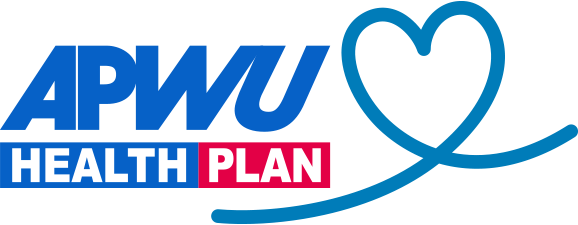One in three adults in the U.S. has high blood pressure, but only about half have it under control. High blood pressure—or hypertension—can damage your blood vessels and lead to serious health problems, including kidney failure. It also increases your risk of having a heart attack or stroke. The good news is that if you’ve been diagnosed with high blood pressure, you may be able to lower it naturally, without medication. It’s as simple as making five lifestyle changes.
Understanding your blood pressure numbers
Hypertension often has no symptoms, so it’s important to check your blood pressure regularly. Understanding your results is the first step to managing high blood pressure.
Blood pressure is recorded as two numbers:
- Systolic blood pressure—the first number—measures the pressure in your blood vessels when your heart beats.
- Diastolic blood pressure—the second number—measures the pressure in your blood vessels when your heart rests between beats.
According to the American Heart Association, a blood pressure of less than 120/80 mm Hg is considered normal.
Making five lifestyle changes can help lower your blood pressure
- Reduce the salt in your diet.
Cutting your salt intake may be the most effective way to lower your blood pressure and improve your heart health. But remember, it can take up to two weeks for your taste buds to adjust to a low-sodium diet.The average American eats more than 3,400 milligrams of sodium each day. The American Heart Association recommends that most adults should consume no more than 2,300 milligrams of sodium a day. However, the ideal limit for most adults, including those with high blood pressure, is no more than 1,500 mg of sodium a day.To put this into perspective, a teaspoon of salt has about 2,300 mg of sodium.One way to cut back on sodium is to skip table salt (which is approximately 40 percent sodium), but most of the sodium we eat comes from packaged, processed foods. It’s important to read nutrition labels because sodium is hidden in everything from frozen dinners and cold cuts to quick breads, pancake mixes, and vegetable juices. Other foods that are high in sodium include soups, broths, canned pastas, sauces, and condiments. To cut your salt intake, choose low-sodium alternatives of packaged foods. And, instead of adding salt, use herbs and spices to flavor your food.
TIP: Restaurant food can also be very high in sodium, so try to make healthy eating choices when dining out.
- Eat a healthy diet
Following the DASH eating plan can help you lower your blood pressure and lose weight. DASH, which is short for the Dietary Approaches to Stop Hypertension, is a wholesome, low-sodium diet that focuses on healthy foods you’ll find at the grocery store, like fruits and vegetables, whole grains, and low-fat dairy.Looking for more ways to eat a heart-healthy diet? Discover 10 foods that can help lower your blood pressure. - Whittle your waistline
More than half of U.S. adults are overweight. Unfortunately, being overweight—and carrying too much weight around your middle—can raise your blood pressure. In general, a waist measurement of greater than 35 inches for a woman or 40 inches for a man is considered unhealthy. Weight loss isn’t easy, but it’s an effective way to lower your blood pressure. If you’re overweight, shedding even a small amount of weight can help control your blood pressure.Looking to lose belly fat? Get 10 tips for flatter stomach. - Get moving
If you’re healthy enough to exercise, regular physical activity can help control your blood pressure. It can also help you lose weight, strengthen your heart, and reduce stress.Most adults should aim for getting 30 minutes of physical activity a day on at least five days a week. But you don’t have to exercise for 30 minutes at a time. Taking three 10-minute brisk walks over the course of a day counts, too. Break up your weekly physical activity however you like. If you have five minutes, you have time to exercise.Before you start exercising, talk to your doctor about which types of exercise are right for you. Physical activity can include:- Aerobic exercises, like cycling, swimming, stair-climbing, rowing, brisk walking, or running
- Flexibility and stretching exercises
- Strength training exercises (aim for at least two days per week)
Too busy to exercise? Find creative ways to sneak physical activity into your daily routine.
- Reduce your stress
Many things can cause stress, including work, relationships, finances, life changes, and emotional problems. While researchers continue to study the link between chronic stress and high blood pressure, stress can raise your blood pressure if it causes you to eat unhealthy food, avoid physical activity, drink too much alcohol, or smoke.Learning to cope with stress in healthier ways can help lower your blood pressure. While you may not be able to eliminate all of your stress, you can take steps to get in under control:- Avoid trying to do too much. Set priorities and give yourself enough time to get things done.
- Learn to say no. Even if people are depending on you, you don’t have to solve everyone’s problems.
- Talk it out. If you’re having trouble at work, discuss it with your manager. If you’re dealing with an issue at home, don’t go to bed angry.
- Make time to relax. Take 15 or 20 minutes a day to sit quietly and give yourself a break from screen time.
- Spend time with a friend. Invest in developing supportive, encouraging relationships.
- Do something you enjoy. Whether you like to experiment in the kitchen or tinker around in the garage, have some fun and let go of the tension in your body.
Bonus tips to help control your blood pressure
Limit the amount of alcohol you drink. If you choose to drink, small amounts of alcohol may lower your blood pressure. However, adults who drink should consume alcohol in moderation: no more than one drink a day for women and two drinks a day for men. One drink equals 12 ounces of beer, five ounces of wine, or 1.5 ounces of 80-proof liquor.
Quit smoking. Smoking cigarettes increases your blood pressure. Quitting smoking can reduce both your blood pressure and your risk of heart disease, while improving your overall health.
Partner with your doctor
If you have high blood pressure, see your doctor regularly. Together, you and your doctor can develop a plan to help you control your blood pressure and live a heart-healthy lifestyle.







